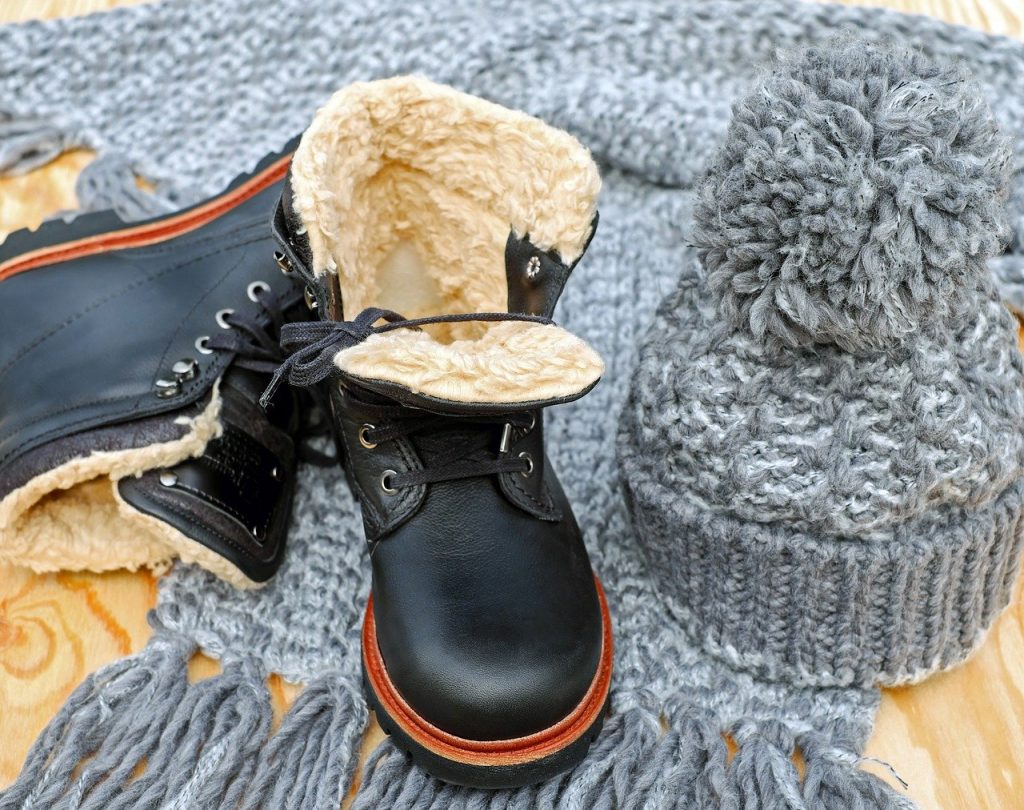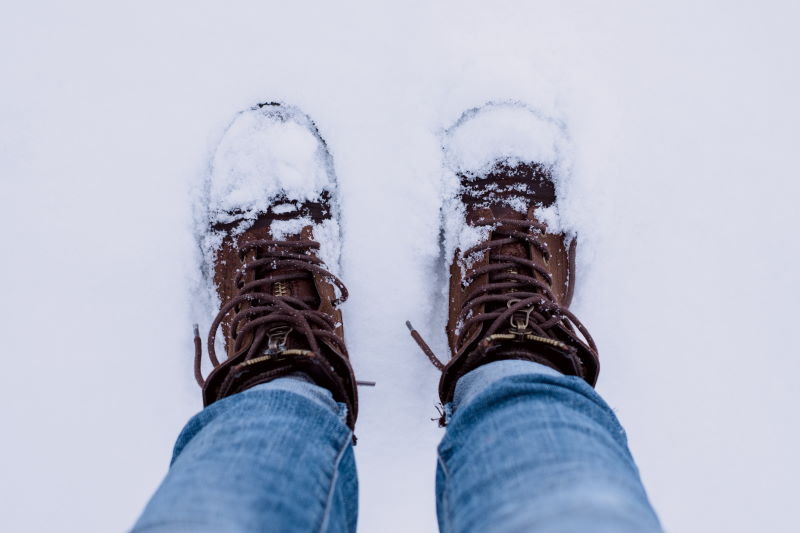Whether you’ve purchased new shoes for an upcoming event or you are replacing a worn-out pair, it’s important to break them in properly. Apart from making them more comfortable, breaking in your new shoes will help to minimize damage and maximize their longevity. Unfortunately, breaking in new shows is not always an enjoyable experience. The good news is that you can minimize the pain and discomfort that comes with breaking in new shoes, using the following tips and tricks.
Walk Around in Them
Your new shoes will only conform to your feet if you spend some time walking around in them. The more you wear them, the faster you will break them in. However, that doesn’t mean you should slip them on and head straight to work. Instead, you should do it gradually. For instance, you can start by wearing them around your house when you are playing with kids, cooking dinner, or watching the TV. Start by wearing them for 10 minutes at a time. After that, you can then increase the duration to one hour or even more, depending on how you feel. If you don’t experience pain or discomfort, you can then start walking around your neighborhood in them. After some time, you can then bring them to work and spend the whole day wearing them. However, don’t forget to carry your old pair of shoes, in case the new shoes become too uncomfortable to wear for long.
Wear Thick Socks
If your new pair of shoes are still uncomfortable, then you should consider wearing them with thick socks. A thick pair of socks will force the upper material to stretch outwards, thus making them more comfortable. Also, a chunky pair of socks will also protect your feet when you are breaking in your new walking shoes, which helps to prevent or minimize the occurrence of blisters and hotspots. However, it’s important to note that if your shoes are tight-fitting, then you will struggle to wear them with a thick pair of socks. But if you can manage to bear the initial discomfort, then it should not be long before your shoes conform to your feet. And that’s why it’s advisable to wear socks when you are trying out a new pair of shoes. Also, you should provide some allowance, since your feet will expand during the day. But now that you’ve already purchased the shoes, a thick pair of socks will help stretch their upper material and make them more comfortable with time.
 Protect the Hot Spots
Protect the Hot Spots
Even if you purchased the correct size, your new pair of shoes might still leave you blisters, making it difficult to walk in them. And if you cannot walk around with the shoes, then it will be almost impossible to break them in. The good news is that you can overcome this challenge by protecting the hotspots. While you cannot prevent blisters completely, you can significantly reduce their occurrence if you know where the hotspots. In layman’s terms, hotspots are certain areas of the feet that are prone to blisters. When you wear a new or an ill-fitting pair of shoes, blisters will form first in these areas, since they are always in contact with the interior surface of the shoes. Notable hotspots include the sides and tops of the toes as well as the heel. Hot spots occur due to friction between the inner surface of the shoe and the feet. Therefore, if you can reduce the friction around the hot spots, then you can significantly minimize the occurrence of blisters. So, how can you protect the hot spots and minimize blisters?
- Apply a lubricant: Before you wear your new pair of shoes, you should first apply some lubricant on your feet on all the potential hot spots areas. Lubricants like petroleum jelly will minimize friction in your shoes, ensuring pain-free strolls. You should note that petroleum jelly will not be easy to wash off from your socks. Therefore, you might have to discard that pair of socks that you will use for breaking in your shoes. You can also opt for commercial lubricants, which are readily available in most drug stores.
- Cover the problem areas: If blisters have already developed while you were walking with your new shoes, covering them can help to prevent further damage and minimize the pain. You can cover those spots with gel bandages, sports tape, special patches or moleskin. Duct tape can also work if the other materials are not available. Paper surgical tape remains the best option for covering the problem areas. Paper surgical taper is smoother and thinner than the other materials that you can use to cover the blisters. Therefore, removing it will not be a painful experience.
Apart from lubrication and taping your toes, you can also add some extra cushioning and support, to make your new pair of shoes even more comfortable, during the breaking in phase. For instance, you can use bunion pads to prevent chafing in the problem areas. You can also purchase cushioned insoles to provide additional comfort and support at the balls of the feet. And if your heel keeps slipping, then you can add heel cushions to counter that problem.
Freeze Them Overnight
Water is one of the few substances that expands when it freezes. Therefore, if you fill your new shoes with water and leave them inside the freezer overnight, they will stretch as the water expands. To use this method, you should first fill-up two freezer bags with water. The water should be enough so that the bags fill up the shoes. Make sure you remove all the air that might be trapped inside the bags when you seal them. Once you’ve removed the air and sealed the bags, place them inside the shoes and then place the shoes inside a larger plastic bag. The larger plastic bag will protect the shoes against excessive moisture. Let the shoes sit in the freezer for 3 to 4 hours and then remove them. Make sure you allow the ice to melt completely so that you can pull out the plastic bags easily. After the ice has converted to water, pull out the bag out of the shoes and then try them on after they’ve warmed up a bit. This method is better compared to using a shoe stretcher because the water will conform to the contours of the shoe, thus making sure that the stretching will be uniform.
Additional Methods
You can also stretch your shoes using a shoe stretcher. Shoe stretchers are readily available in almost all shoe stores. And if you can’t find a store new you that sells one, then you can purchase it online. Shoe stretchers are available in different sizes. Some are also adjustable, meaning you can use them with different shoe sizes. However, avoid overstretching the shoes, as you might end up damaging them. And if all the above methods have not worked, then you should visit a cobbler, who will machine-stretch your new pair of shoes. The cobbler will first apply a stretching solution all over the shoes, and then stretch them using the machine for a few hours.
Precautions
As much as you would like your new pair of shoes to conform to your feet within the shortest time possible, some techniques or approaches might end up damaging your shoes – especially if they are made of leather. For instance, trying to stretch them with artificial forms of heat such as an oven, a microwave or a hairdryer is not advisable. Prolonged exposure to heat might dry the leather, leading to cracks. Heat might also damage the sole if it’s made of soft rubber. Also, don’t apply alcohol on the shoes, as it might leave stains and marks on the surface.
Closing Remarks
It’s normal for a new pair of shoes to feel uncomfortable. Therefore, they will require a break-in period so that they can stretch and conform to your feet. The break-in duration will depend on the materials used to make the shoes, as well as the methods you are using. Breaking in new shoes doesn’t always have to be a miserable experience. Following the above tips and tricks will help to shorten the break-in period while protecting your feet against blisters and hot spots.


 Protect the Hot Spots
Protect the Hot Spots
0 comments